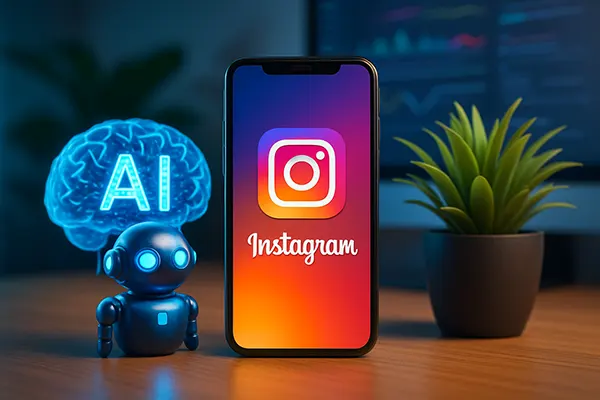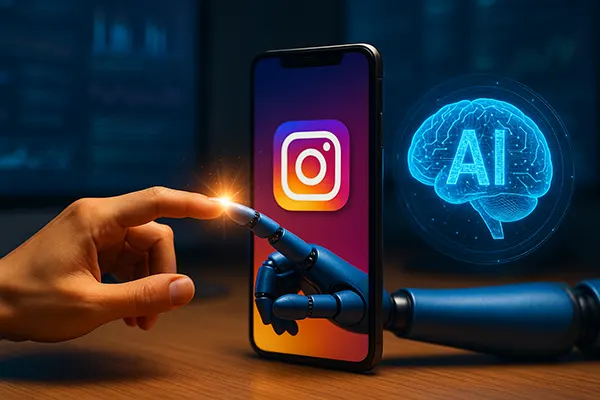How Artificial Intelligence Transforms Instagram Marketing Strategies in 2025

In 2025, artificial intelligence is no longer a futuristic concept – it has become a core component of how brands navigate and adapt their Instagram marketing strategies. With algorithms becoming more intuitive and machine learning tools gaining complexity, AI-driven tools are reshaping every aspect of content planning, audience engagement, and performance analytics.
AI-Driven Content Creation: From Efficiency to Authenticity
One of the most noticeable changes in 2025 is the widespread integration of AI in content production. Advanced language models are now used to craft captions that are not only grammatically correct but also contextually engaging, tailored to the preferences of each brand’s specific follower segments.
Visual content has also seen a transformation. Brands are now using AI-powered tools to design graphics, optimise colours, and even generate short-form videos based on trends that emerge in real time. This automation speeds up workflows while maintaining high standards of creativity.
Moreover, AI assists in content planning by analysing past post performance and suggesting optimal publishing times. It factors in not only follower activity but also external data such as seasonal interest peaks and current events that may influence engagement.
Customisation and Brand Consistency
Despite the increased automation, AI systems have advanced to ensure brand consistency is preserved. Through training datasets based on prior campaigns, tone of voice, and visual identity, marketers can generate content that remains aligned with their long-term strategy.
This level of personalisation ensures that followers receive content that feels uniquely tailored rather than mass-produced. AI algorithms now recognise patterns in how users interact with different formats, adjusting accordingly to maintain relevance and visual cohesion.
Thanks to this blend of efficiency and customisation, brands have managed to improve user retention and loyalty without sacrificing authenticity in their messaging.
Audience Segmentation and Engagement Forecasting
AI has significantly evolved how marketers segment their Instagram audiences. Rather than relying on demographics alone, systems in 2025 incorporate psychographics, behaviour trends, and cross-platform activity to identify micro-segments with distinct preferences.
These insights allow for more accurate targeting of promotional posts, influencer collaborations, and product launches. For instance, a fashion brand might now segment users based on sustainable purchasing habits or affinity for minimalist aesthetics.
AI also enables marketers to forecast how audiences will engage with certain types of content. Predictive models now assess variables such as copy length, emoji usage, or music selection to anticipate engagement levels before a post goes live.
Dynamic Interaction Through Chatbots and DMs
AI-powered chatbots in 2025 are indistinguishable from real people in direct messages. These systems manage community responses, answer FAQs, and even handle basic customer support directly through Instagram DMs, freeing up resources for strategy development.
Advanced systems now learn from each customer interaction, refining their responses over time and adjusting their tone based on user sentiment. This helps brands maintain a responsive and human-like presence around the clock.
In addition, automated comment moderation has reduced the need for manual review. AI tools filter spam, offensive language, and even contextual irrelevance, improving the quality of discussion and brand perception.

Performance Analytics and Strategic Optimisation
Traditional metrics like impressions and likes are no longer enough in 2025. AI tools now provide multidimensional analytics that evaluate sentiment, conversion attribution, and user intent across different types of Instagram content – from Stories to Reels and Carousel posts.
Marketers use this data to create comprehensive performance dashboards that visualise how each campaign element contributes to broader brand goals. AI also identifies underperforming segments and suggests corrective measures in real time.
This continuous feedback loop enables more agile strategy refinement, ensuring that Instagram campaigns remain aligned with business outcomes rather than just short-term engagement spikes.
Scenario Simulation and ROI Prediction
One of the most powerful innovations in 2025 is the ability of AI systems to simulate campaign outcomes before they are launched. By feeding historical data, audience preferences, and platform trends into these models, marketers can evaluate multiple content strategies in a simulated environment.
ROI prediction models also now account for indirect benefits such as increased brand mentions, story shares, and DM conversations. These insights allow for more accurate budget allocation across influencer partnerships, paid advertising, and organic growth initiatives.
As a result, AI has shifted Instagram marketing from intuition-based execution to data-driven forecasting, increasing accountability and transparency in how campaigns are planned and measured.
